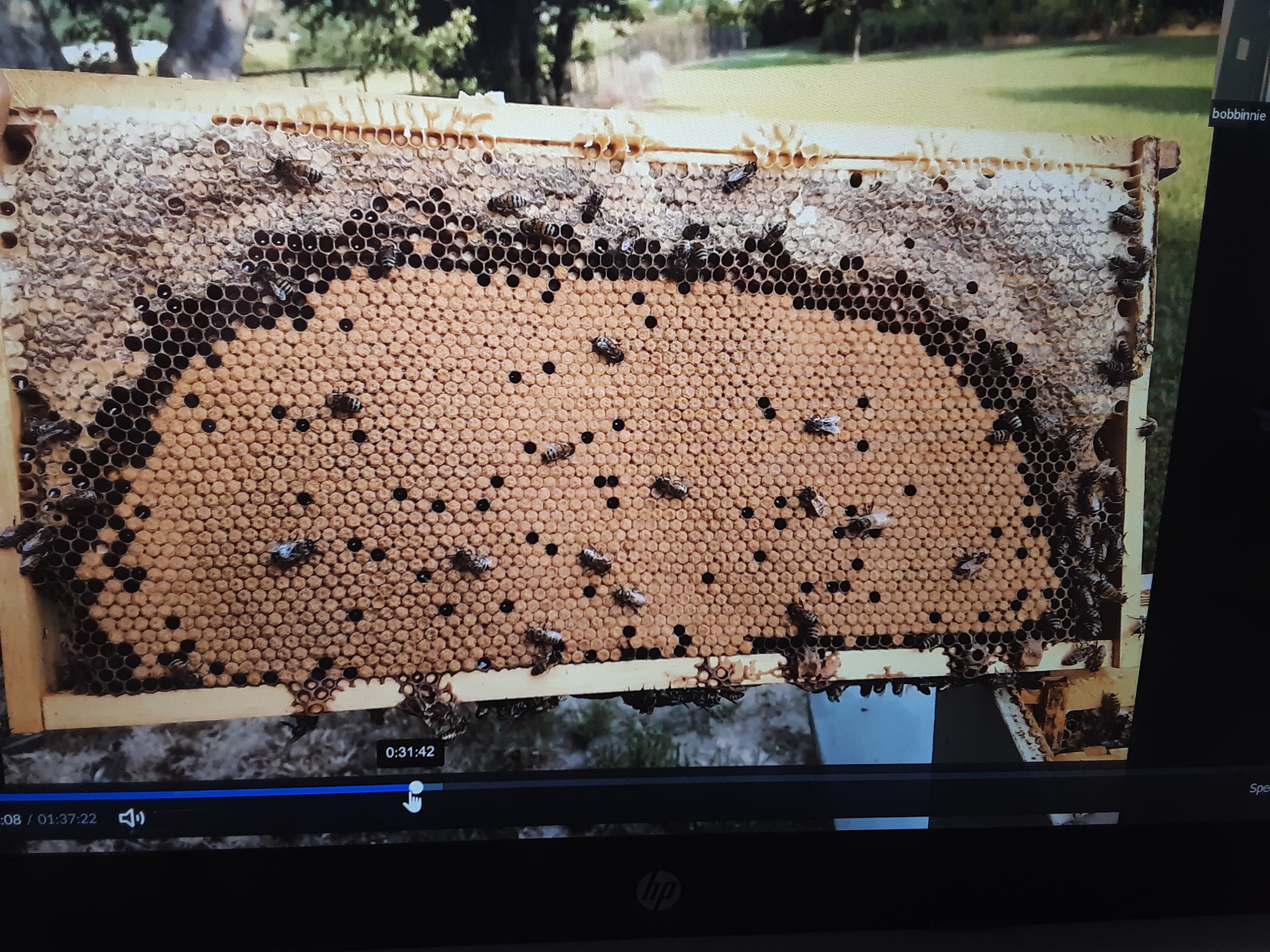In cappedcapping:
the covering that bees add over comb cells containing fully ripened honey or to cap brood that has reached the pupal stage; bee bread cells are not capped cells, a tiny perforation is often present. Before cappingcapping:
cells, a tiny perforation is often present. Before cappingcapping:
the covering that bees add over comb cells containing fully ripened honey or to cap brood that has reached the pupal stage; bee bread cells are not capped , the larva dries into a rough canoe shape, with the head (the part of the larva facing the cell opening) being shrunken and darker than the rest of the body. The body covering will be leathery and greyish-yellow to brown. Dead larvae usually are easily removed from the cell and appear sac-like beyond the leathery head portion. Adult bees with sacbrood lack signs of it.
, the larva dries into a rough canoe shape, with the head (the part of the larva facing the cell opening) being shrunken and darker than the rest of the body. The body covering will be leathery and greyish-yellow to brown. Dead larvae usually are easily removed from the cell and appear sac-like beyond the leathery head portion. Adult bees with sacbrood lack signs of it.
Sacbrood virus (SBV) often appears during spring colony buildup. It affects both larval and adult stages. The infected adult bees will have a decreased lifespan. Infection of larvae causes larval death before pupation. The signs of SBV can be confused with those for American foulbrood.
The decaying larval body will have a leathery covering and a distinctly discolored greyish-yellow to brown “head” (outside end) that is shrunken and darker colored. The rest of the body is sac-like when removed from the cell. Dead larvae usually are easily removed from the cell. The remains have a “canoe” appearance that is curled at both ends, with the head end darker. Sometimes the dead remains have a tiny head-like structure beneath a cappingcapping:
the covering that bees add over comb cells containing fully ripened honey or to cap brood that has reached the pupal stage; bee bread cells are not capped with a perforation.
with a perforation.
American foulbrood or other brood diseases
Beekeeping Resources n.d. Viral Diseases. University of Georgia Bee Program. Accessed 2023. https://bees.caes.uga.edu/bees-beekeeping-pollination/honey-bee-disorders/honey-bee-disorders-viral-diseases.html
Shimanuki H and Knox D. 2000. Diagnosis of Honey Bee Diseases. US Department of Agriculture Agriculture Handbook 690.https://www.ars.usda.gov/is/np/honeybeediseases/honeybeediseases.pdf
Moore, PA, Wilson ME, and Skinner JA. 2019 update. Honey Bee Viruses, the Deadly Varroa Mite Associates. Bee Health. Accessed 2023. https://bee-health.extension.org/honey-bee-viruses-the-deadly-varroa-mite-associates/
CAPA. 2019. Honey Bee Diseases & Pests, Third Edition. Canadian Association of Professional Apiculturists. Accessed 2023. https://capabees.com/capa-honey-bee-diseases-and-pests-3rd-edition/